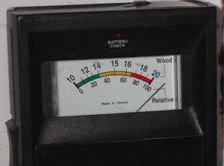How to Get Rid of Mold From Every House Surface area
Mold spores are all over around us in every type of climate. Mold is fungis and some types are extremely useful to humanity (think about penicillin), while others can be rather dangerous to crops, respiratory systems, and the integrity of structures. Dangerous Mold vs. Mildew The most common kind of mold discovered in homes is mildew.
Mildew is a surface area mold that grows in warm, wet places like your restroom and on fabrics and books saved in wet basements. Mildew starts as a gray or white grainy nest. It will turn black or brown if not eliminated promptly and frequently looks like soil build-up. To check if the surface is covered with mildew or simply dirt, dab the stain with a cotton swab dipped in family chlorine bleach. If the stain lightens or vanishes after 2 or three minutes, it's mildew. If not, it's probably simply dirt. If mold and asbestos inspection you detect a moldy odor anywhere in your house, then you have a high concentration of mold. It can be coming from a hinder filled with moist towels, from a wet crawlspace under your house, or carpets that have mold growing in the padding. It's definitely time to take action to eliminate the problem. Now you understand that all mildew is mold however not all molds are mildew.
Mildew can tarnish and gradually harm surfaces but there are far more dangerous molds that can harm the structure of your house. If you see a black or green mold that is fuzzy or slimy and the drywall or wood below is soft or crumbles, there is irreparable rot and the mold and the damaged surface areas should be removed immediately.
Hiring Experts If mildew problem is caught early, you can quickly handle it with family cleaners.
Caution For comprehensive mold problems, think about employing a professional. Some molds are extremely toxic and even less dangerous molds can cause problems for anybody with mold allergic reactions or compromised breathing systems. The general rule is if the mold covers 10 or more square feet, employ an expert. Removing large mold colonies needs direct exposure to sturdy chemicals and appropriate disposal of infested structure materials.
Regional public health departments can use recommendations on mold screening and refer you to a professional mold eliminator.
Products That Eliminate Mold Chlorine bleach: Salt hypochlorite or routine home bleach works best to destroy mold and eliminate any staining. It is quite extreme and should be watered down prior to using.
Warning Caution must be utilized due to toxicity and hazardous fumes and bleach ought to never be combined with ammonia.
Hydrogen peroxide: Less extreme than chlorine bleach, hydrogen peroxide (three to 10 percent option) will kill mold and lighten stains. While it does have a whitening result, it works more slowly than chlorine bleach but has no harmful fumes or residue.
Distilled white vinegar: Vinegar is acidic and slowly breaks down the structure of mold and kills it. Vinegar is non-toxic however mold stains may remain and additional scrubbing with a home cleaner might be required.
Baking soda and borax: Salt bicarbonate (baking soda) and borax each have a high pH that hinders the development and survival of mold. Both items are economical, non-toxic, and simple to blend with water. Borax will work better in removing any sticking around spots but not as efficiently as a stronger cleaning item. When using any of these products, do not wash away the cleaning option completely. Leaving a little bit of the cleaner will assist hinder future mold development.
Elimination from Fabric If your home has been flooded and mold and bacteria have actually been delegated grow for lots of days, it may be difficult to restore fabric products. Nevertheless, if mildew has actually developed due to moisture and is captured early, it can quickly be gotten rid of from many fabrics. Begin by taking the items outside to brush away as much surface area mold as possible and to prevent spreading out the mold spores inside your home. If the material is washable, utilize the most popular water advised on the care label and include a disinfectant. If discolorations remain, produce an option of oxygen bleach and water and allow the clothing to soak for a minimum of eight hours.
Oxygen bleach can be utilized securely on any washable fabric. For materials that are dry clean only, brush away the mildew outdoors and after that head to a professional cleaner. Identify and mention the discolorations and most materials can be successfully restored.
Leather Shoes, Coats, Accessories, and Furniture Mold on leather coats, shoes, handbags, and furniture ought to be removed outside, if possible. Clean down the surface area with http://www.thefreedictionary.com/Mold inspection a cloth dipped in distilled white vinegar and then with a great leather soap and warm water. Dry with a soft cloth and allow to air dry totally. As soon as entirely dry, treat the item with a leather conditioner.
Books and Papers Mold will ultimately destroy paper however it can be effectively gotten rid of. For pricey books and traditionally substantial papers, seek advice from a professional manager. Never ever attempt to treat moist paper. The mold will smear and end up being nearly impossible to get rid of. Allow the paper in books to air dry thoroughly in the sun or place in a sealed container with wetness absorbent product like silica gel or cornstarch sprayed in between the pages. When the book is dry, head exterior and use a soft paintbrush or cloth to carefully brush away the mildew from the cover and each page. Slide a sheet of waxed paper under each page to protect the page behind it. A little moisten a tidy, soft fabric with hydrogen peroxide and carefully wipe down each page enabling it to air dry totally prior to moving to the next page.
